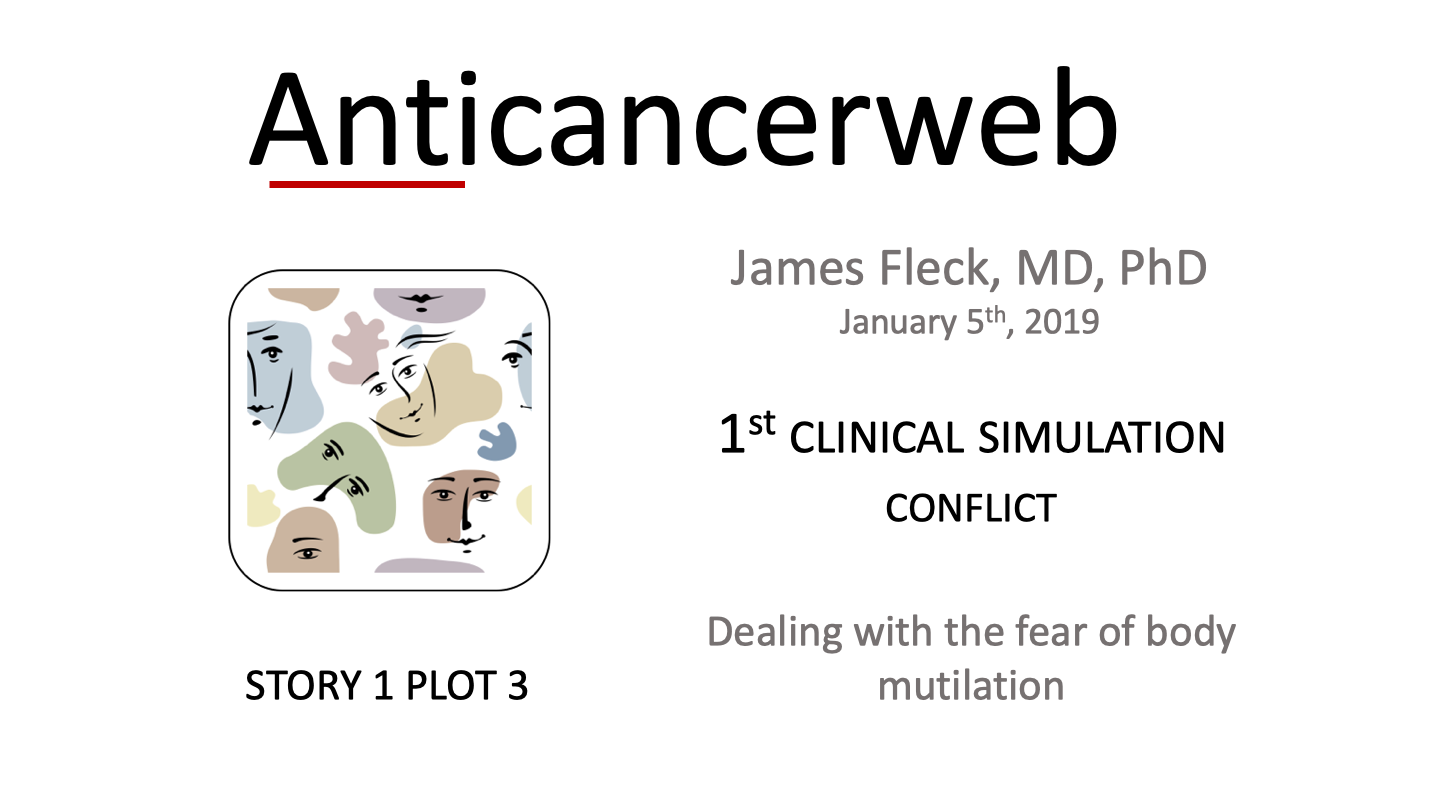
The Internal Enemy | Conflict
Dealing with the fear of body mutilation
(Fictional narrative by the doctor)
James Fleck, MD, PhD & João A de Andrade, MD
Anticancerweb 05 (01), 2019
The first intervention would be surgery and Ruth scheduled a consultation with a breast surgeon. Considering the size and the location of the primary tumor, she might be a good candidate for a procedure called breast-conserving surgery developed by Dr. Vera Peters at the Princess Margaret Hospital in Toronto back in the mid-1970s. During the first half of the twentieth century early breast cancer was routinely treated with mastectomy. Dr. Peters was a pioneer who challenged the radical breast cancer surgery paradigm. She relentlessly pursued the hypothesis that breast-conserving surgery (lumpectomy) followed by radiation would be as effective as a radical mastectomy. She eventually published a retrospective case-control study which suggested that her hypothesis was correct. Later on, six randomized trials and two metanalysis conducted worldwide confirmed the equivalence of lumpectomy plus radiation versus mastectomy in the primary treatment of early-breast cancer. There was a manageable low rate of local recurrence, but cosmetic and functional outcomes were preserved. Some of these prospective trials have now almost thirty-years of follow-up, and the original results still hold.
At this point a felt that I might had been too long-winded…
With her usual direct style, Ruth interrupted me and fired the question: “How would the surgeon be sure that he/she removed the entire tumor?
I explained to her that the surgeon would use a technique called “needle-wire localization”. He/She would insert two or more wires approximately 1 cm from the edges of the tumor as defined by previously available imaging. The resection would then be performed outside the wires and the removed tissue would be sent to the Department of Diagnostic Imaging. Using two previously obtained orthogonal digital mammograms, the radiologist would inform the surgeon whether the entire radiological tumor image was included in the surgical specimen or not. Additionally, digital images would be sent to the surgeon into the operating room for a second evaluation as an added layer of safety. Shortly after, the pathologist evaluates the tissue under the microscope and issues a precise report to the surgeon on the distance between the resection margin and the tumor.
Ruth sighed in relief, but immediately asked me if the tumor could move along the breast.
Well, I was about to mention the risk of lymph node metastasis.
Again, I was surprised by how much we were thinking in synchrony.
Despite the fact that she had no enlarged axillary lymph nodes, it was still possible that tumor cells could be present in the lymphatics. The surgeon would perform what is called a “sentinel lymph node biopsy”. The sentinel lymph node is usually the first one to be dissected during surgery. It is easily located after the injection of a small amount of radioactive substance in the breast, and as close to the tumor as possible. The radioactive material drains though the lymphatic vessels and is caught in the first axillary lymph node, which is called “the sentinel”. The sentinel node is examined by the pathologist both in the operating room and in the laboratory of anatomical pathology. The absence of tumor cells in the sentinel node means that there is no involvement of distal axillary lymph node and the disease is then staged as “No”.
I also mentioned that a sentinel lymph node biopsy is considered to be the standard procedure worldwide. It has avoided much of the chronic arm swelling (lymphedema) that used to impair function and cause aesthetic distress.
At that particular moment, Ruth appeared quite serene as she digested all the information provided.
The breast is a multifunctional organ and a mastectomy will affect a woman’s self-image, sexuality, and, for some, motherhood. The impact of surgical resection of breast cancer can be mitigated by the use of a less aggressive technique such as lumpectomy associated with a sentinel lymph node biopsy.
Ruth was clearly living with a dilemma. She wanted all the disease removed but, at the same time, she would like to keep her body as intact as possible.
Fortunately, advances in science have made possible for many patients to reconcile those two priorities!
To be continued in PLOT 4 (climax): Shared decision-making
* Attention: The story 1 was published sequentially from the PLOT 1 to the PLOT 6, however it will appear backwards. So, you will always see the most recent publication. Just browse in numbered pages located at the bottom of the homepage and start to read the story 1 from the beginning.
© Copyright 2019 Anticancerweb
James Fleck, MD, PhD: Full Professor of Clinical Oncology at the Federal University of Rio Grande do Sul, RS, Brazil 2019
Joao A. de Andrade, MD: Professor of Medicine and Chief Medical Officer, Vanderbilt Lung Institute, Vanderbilt University Medical Center, Nashville, TN – USA 2019 (Associate Editor)

Please login to write your comment.
If you do not have an account at Anticancerweb Portal, register now.